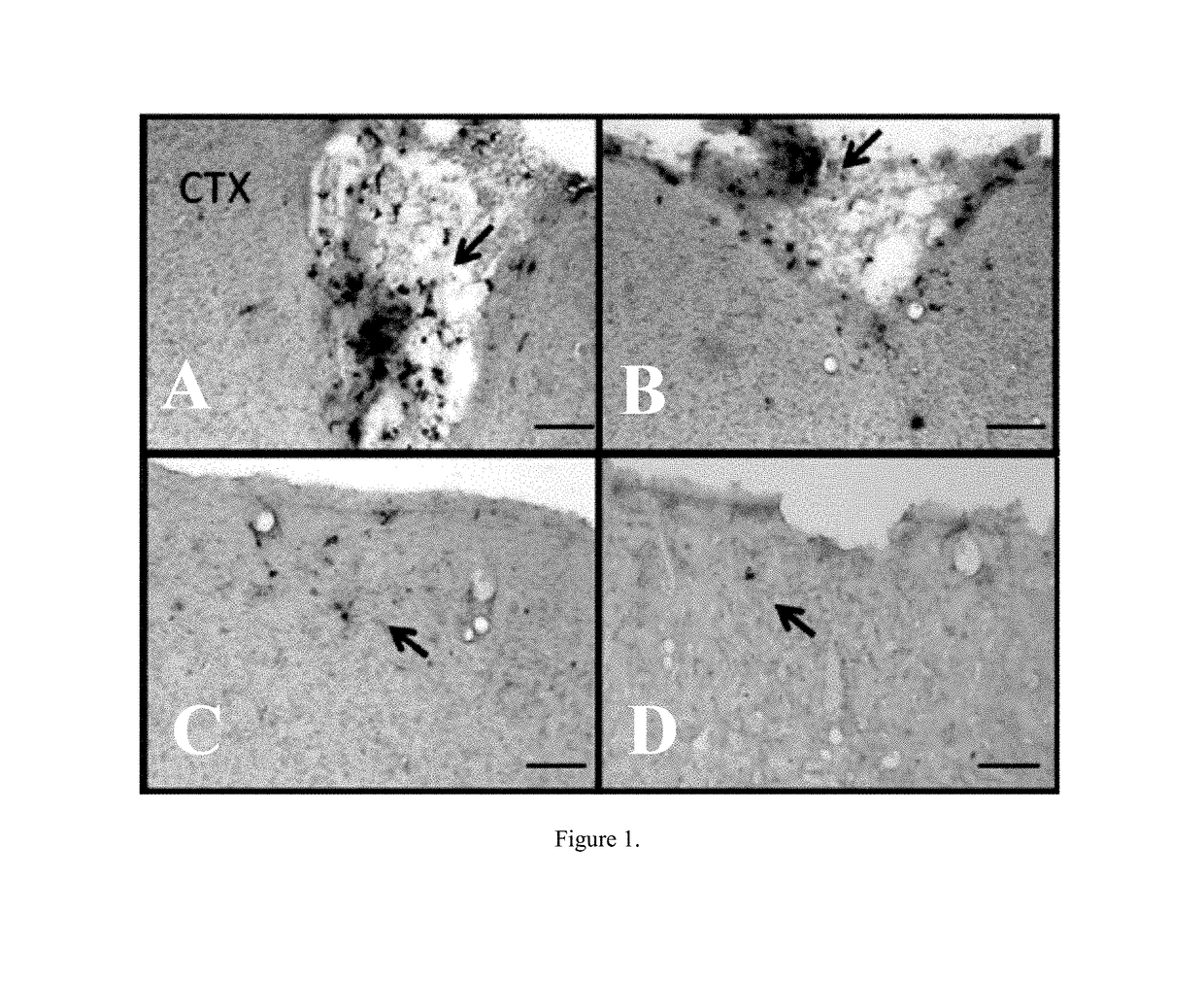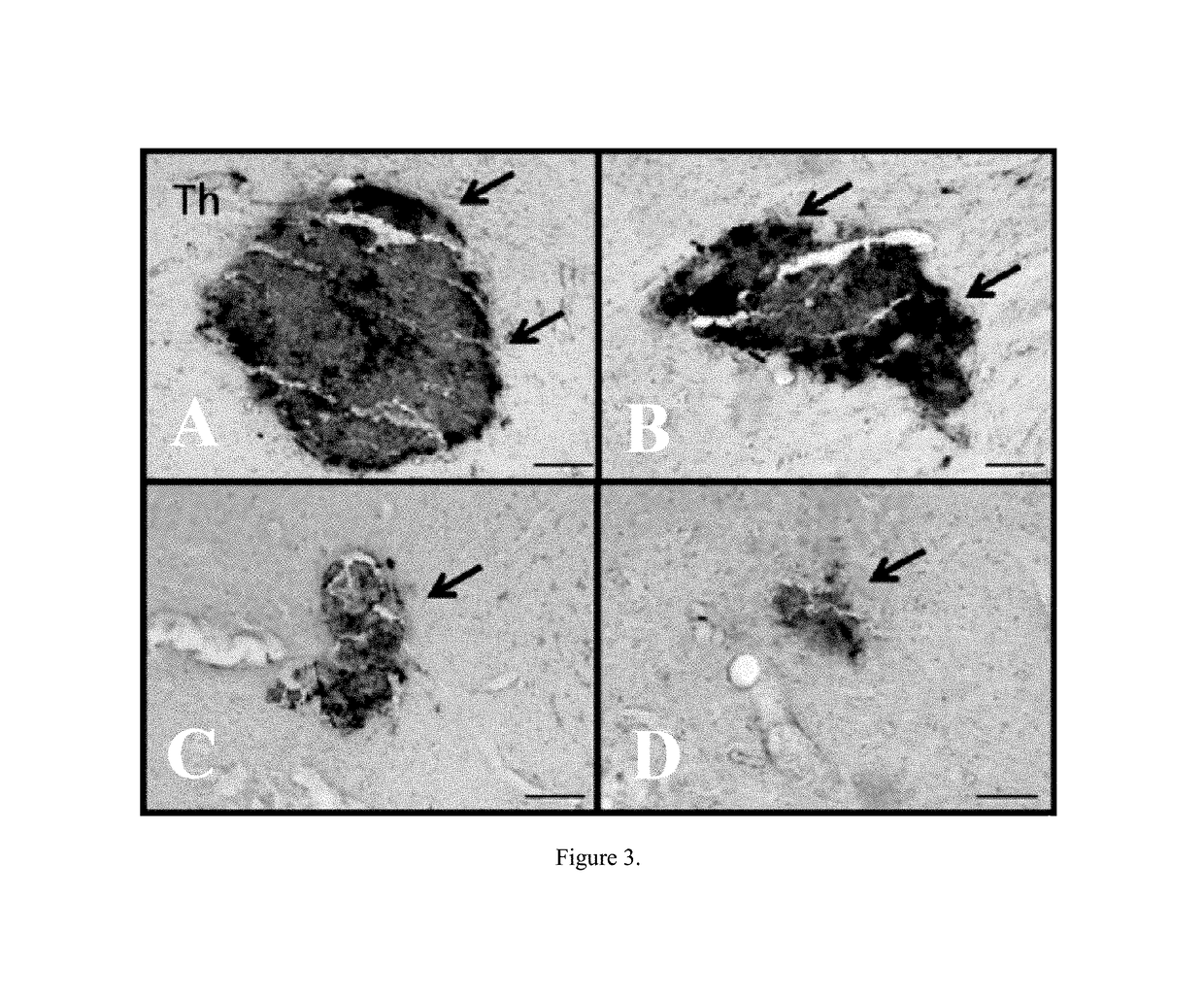Combination therapy of stem cell mobilizing agents and stem cell transplantation
a stem cell mobilization agent and stem cell technology, applied in the direction of peptide/protein ingredients, pharmaceutical delivery mechanisms, mammalian material medical ingredients, etc., can solve the problems of limited clinical treatment, limited regenerative potential, and few that have been utilized, and achieve impaired endogenous neurogenesis, severe hippocampal cell loss, and wide spread of neuroinflammation
- Summary
- Abstract
- Description
- Claims
- Application Information
AI Technical Summary
Benefits of technology
Problems solved by technology
Method used
Image
Examples
example 1
[0048]Pharmaceutical compositions according to the present invention preferably comprise an effective number within the range of about 9.41×106 cells / kg to about 1.77×107 cells / kg, more preferably about 9.75×106 cells / kg to about 1.5×107 cells / kg, generally in solution, optionally in combination with a pharmaceutically acceptable carrier, additive or excipient.
[0049]Human umbilical cord blood cells (hUCBC) were obtained as follows. Written consent to obtain umbilical cord blood was obtained from the mother prior to delivery. Whole cord blood was obtained from the umbilical cord following the birth of the child after the cord was clamped and collected in sterile tubes with heparin (10 units of heparin per 1 mL of blood) in total volume of 15 mL. Maternal blood was tested for HIV, hepatitis, syphilis, cytomegalic virus, and HTLV and the blood was rejected if any of these tests were positive. Sterile technique was used throughout the isolation procedures (Toma, et al., Human mesenchyma...
example 2
[0055]Ten-week old Sprague-Dawley rats (n=55) were subjected to TBI using a controlled cortical impactor (CCI; Pittsburgh Precision Instruments, Inc, Pittsburgh, Pa.). Experimental procedures were approved by an animal care and use committee. All male rats were housed under normal conditions (20° C., 50% relative humidity, and a 12-h light / dark cycle). Normal light / dark cycle was employed. A separate cohort of animals, saline group, (n=7); G-CSF group, (n=8); hUCB group (n=8); hUCB+G-CSF (n=8) underwent the same experimental above and subjected to behavioral tests to determine the functional effects of hUCB and G-CSF. All behavioral testing was done during the light cycle at the same time across testing days. Necessary precautions were taken to reduce pain and suffering of animals throughout the study. All studies were performed by personnel blinded to the treatment condition.
[0056]Deep anesthesia was achieved using 1-2% isoflurane in nitrous oxide / oxygen (69 / 30%) using a nose mask....
example 3
[0059]Rats were treated as described in Example 2. Under deep anesthesia, rats were sacrificed 8 weeks after TBI surgery for hisotological analysis. For transcardial perfusion, rats were placed on their backs, and blunt forceps were used to cut through the body cavity. The opening was extended laterally until reaching the rib cage. Rib cage was cut, and sternum was lifted to expose the heart. The heart was held gently, and the needle was inserted ¼ inch into the left ventricle. The right atrium was cut using the irridectomy scissors. Through the ascending aorta, approximately 200 ml of ice cold phosphate buffer saline (PBS) followed by 200 ml of 4% paraformaldehyde (PFA) in PBS were used for brain perfusion. Brains were removed and post-fixed in the same fixative at 4° C. for 24 hours followed by 30% sucrose in phosphate buffer (PB) for 1 week. Brains were frozen at −24° C., mounted onto a 40 mm specimen disk using embedding medium. Coronal sectioning was carried out at a thickness ...
PUM
| Property | Measurement | Unit |
|---|---|---|
| time | aaaaa | aaaaa |
| total volume | aaaaa | aaaaa |
| total volume | aaaaa | aaaaa |
Abstract
Description
Claims
Application Information
 Login to View More
Login to View More - R&D
- Intellectual Property
- Life Sciences
- Materials
- Tech Scout
- Unparalleled Data Quality
- Higher Quality Content
- 60% Fewer Hallucinations
Browse by: Latest US Patents, China's latest patents, Technical Efficacy Thesaurus, Application Domain, Technology Topic, Popular Technical Reports.
© 2025 PatSnap. All rights reserved.Legal|Privacy policy|Modern Slavery Act Transparency Statement|Sitemap|About US| Contact US: help@patsnap.com



